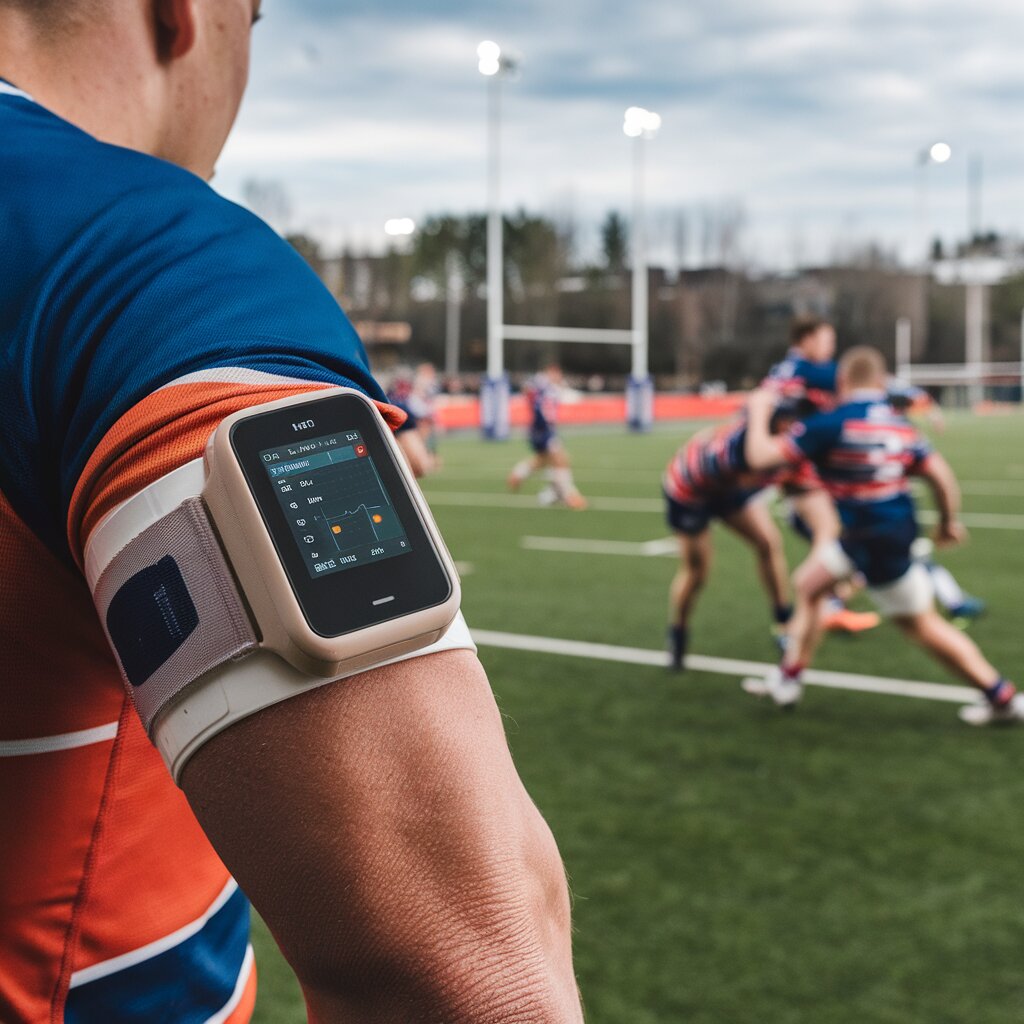The marriage of Internet of Things (IoT) technology with rugby wearables has brought about a paradigm shift in the world of sports since 2020. Fast forward to 2024, and the latest advancements in these wearables have elevated them from mere fitness trackers to indispensable tools for athletes and coaches. These sophisticated devices now deliver real-time data and enhanced safety features that are reshaping how the game is played, coached, and analyzed.
The Evolution of Rugby Wearables
Originally, rugby wearables were basic fitness trackers, limited to monitoring simple metrics like heart rate, speed, and distance. Today, they have evolved into highly advanced devices capable of capturing a broad spectrum of physiological data, including muscle activity and hydration levels. This leap in functionality is largely due to the integration of edge computing and artificial intelligence (AI).
Edge computing allows for immediate data processing on the device, which is crucial for making quick decisions in the high-energy environment of a rugby match. For instance, the England rugby team has been leveraging these advanced wearables to optimize player performance and safety. The data-driven insights gleaned from these devices have become a critical component in making strategic decisions during matches.
Real-Time Monitoring and Performance Enhancement
One of the most transformative applications of IoT in rugby wearables is real-time health and performance monitoring. Embedded sensors in these wearables can track the force of impacts during tackles, providing essential data on the physical stress players endure. This information empowers coaches to make informed decisions about player substitutions, thus preempting injuries and ensuring peak performance throughout the game.
Advanced AI algorithms analyze this data to predict injury risks, facilitating customized training programs aimed at fortifying vulnerable areas of a player’s body. Such technologies are not just innovations; they are necessities in contact sports like rugby and American football, significantly mitigating long-term health risks such as concussions.
These real-time insights are instrumental in crafting tailored strategies that meet the unique demands of each player, thereby enhancing overall team performance.
Enhancing Player Safety
Safety has always been a paramount concern in rugby, a sport characterized by high-impact collisions. IoT-enabled wearables have emerged as frontline tools in tackling this issue. Innovations like the “LiveSkin” technology from Sansible Wearables, which first debuted in 2020, have been further refined to offer even more precise data on the force and angle of impacts. This capability greatly enhances the assessment of potential injuries, particularly concussions, which remain a significant concern in the sport.
Moreover, smart mouthguards made their debut at this year’s Six Nations Championship. These devices provide real-time data on head impacts, further augmenting player safety and informing injury prevention strategies.
Future Trends and Challenges
Looking ahead, the future of IoT in rugby wearables is incredibly promising. Upcoming advancements in edge AI and machine learning are expected to enable wearables not only to monitor but also to adapt in real-time to players’ needs. This could mean dynamic adjustments to hydration, pacing, and tactics based on live physical and cognitive data.
In summary, the integration of IoT in rugby wearables has progressed markedly, offering real-time data that bolsters both player performance and safety. As technology continues to evolve, these devices will become even more integral to the sport, paving the way for unprecedented innovation and improvement in the game of rugby.


